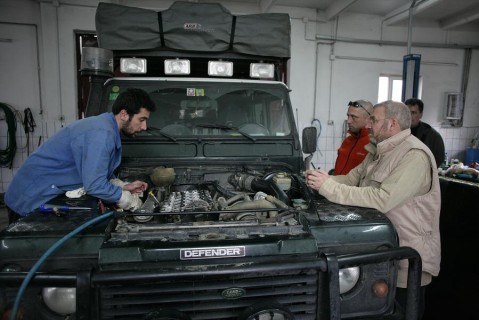
As you are probably all aware, getting a truck up the hills and in the mud comes with a cost. Whether you treat your 4x4 kind or you push the pedal to the metal, parts have always and will always break. The downside of this is that they almost exclusively break when you need them most, or so you think.
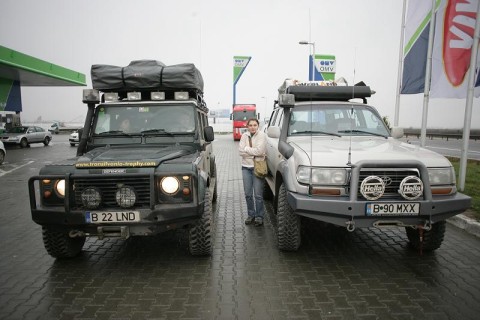
Along the years weve a good deal of parts break at the trucks and I thought itd be a good idea to make a list of what we managed to break, at what cars, symptoms and how to fix them, if possible.
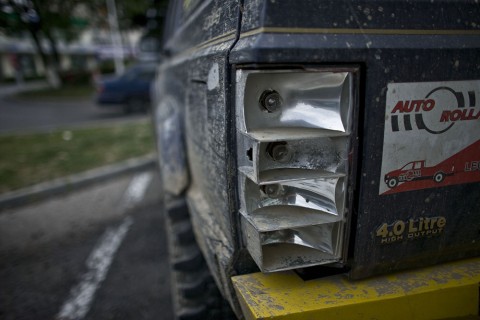
An off road vehicles most abused system is obviously the transmission. Drive and prop shafts, transfer box and other bits that actually get you places suffer a great deal of stress from bumps and jumps. Its just the way things go. And its a Land Rovers Achilles heel.
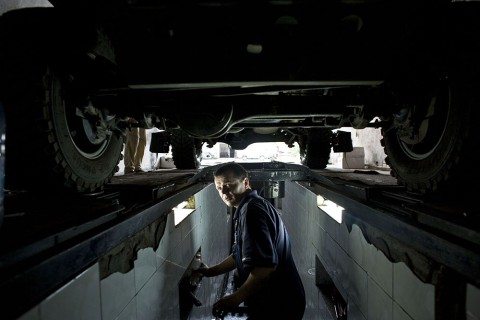
A recurring problem that weve experienced, at least in the past year, was a broken ring and pinion. The ring and pinion are located in the differential and they are a key component in moving the wheels. The ring is a metal circle, that sits in the differential and transfers the power received from the prop shaft to the wheels. They have different ratios, depending on what the user requires of the car (marked 4.11, 4.55, 5.28). What usually happens to these two pieces is that the pinion, which has a small cone-shaped end with teeth that fit on the ring, shaves off the rings teeth and is thus unable to deliver traction to the wheel.
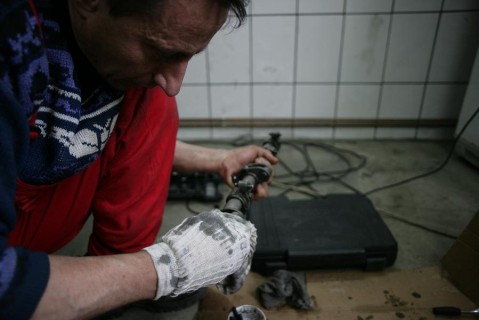
The second time this happened, it was a side effect of a drive shaft failure. The Defender 90 that is part of the organizing team broke the rear long drive shaft, from the differentials side. Along with this, bits of the teeth from the ring and pinion were also broken off and fell in the oil that fills the differential. Again, I cant stress this enough when you feel your car losing power and suspect the differential, you should stop it as soon as possible. We didnt and found out, the hard way, why you should be careful. The bits of metal I was talking about move around in the space and get stuck in various places. If the car is forced, you may come to the point where (like on this particular truck Land Rover) you would need to change the whole drive shaft system, ring and pinion, ARB locker system AND the differential housing which was irremediably damaged.
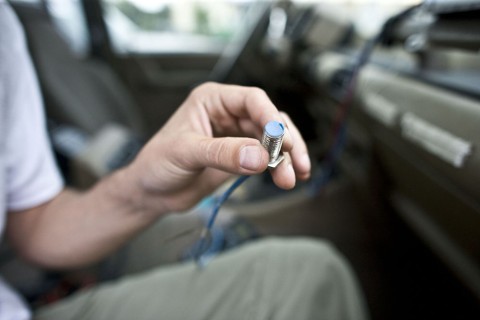
Drive shafts and a bigger wheel. One of the cars we used to do the tracks is a Discovery V8i that pulled the weight for most of the Open class. While trekking for the fourth day, we found an interesting low visibility road through tall grass, up a hill. While we were pushing up on new found track, the right front wheel hit a cut down tree trunk and made a 15 centimeter hole in the tire. Unfortunately the spare, which we hoped never to use, was a tad bigger than the other three but we decided to go through with it. Not long after, on a 45 degree climb in a U turn, we lost traction to the rear of the car, due to a broken drive shaft. Also there was a new sound coming, which announced that the front shafts werent working right with the differential either. Short after that we decided that we should have the car checked before continuing. We were carefully driving back in the city, on tarmac when all the cars transmission failed, getting us just within the city limits. We just stopped, got down and got under the truck. To our surprise, both prop shafts were spinning, with the car in gear, but the car was not moving. This was fixed by replacing the drive shafts and tending to the car a bit better.
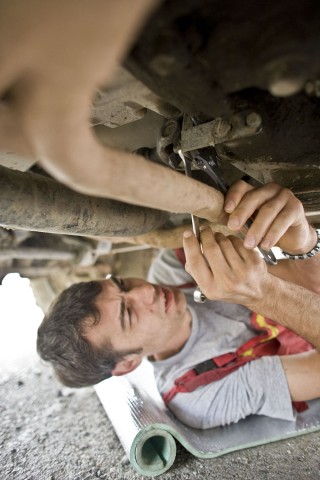
These hoses enter just on the top of your differential and apply pressure so that the front/rear differential locks in. Theyre not heavy duty items and are affected easily. We had two events with them, one of which involved serious servicing for nothing. The first case was simple. The hose that comes from the compressor to the front or rear differential is connected via a small metal tube with some plastic seals we managed to break the tube on one occasion and remained without a rear locker. Its quite easy to fix but it takes a clean axle to work on it fine. The second locker related issue regarded the actual entrance in the differential. It had been hit and needed replacement. Unfortunately the screw has two bits which lock each other, one of which is inside the differential. If the outside bit gets damaged, replacing it means taking off the whole differential, in the best of cases, to take the inside half out as well.
In this particular area we didnt have major problems. We managed to rip off one of the brake lines in a branch while working on an extreme special stage down a river. It was quickly replaced at the service and didnt have too many side effects.
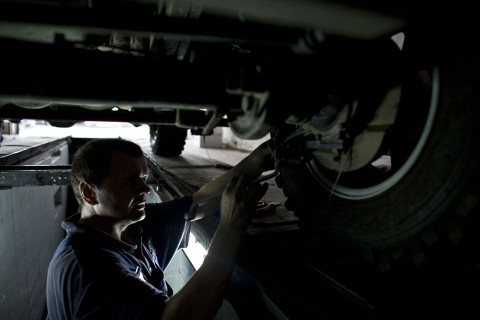
A problem some cars have is rust and dust in the calipers. We saw this on our 110 SW since the brakes werent as effective as they should. We took the truck to the service and discovered deposits on the calipers which stopped the system from functioning at its normal parameters. The wheel was taken off and pressure was applied so that the deposits were forced off. The breaks functioned smoothly and, after checking the fluid and airing the pipes to get any bubbles out, the breaks were back to normal.
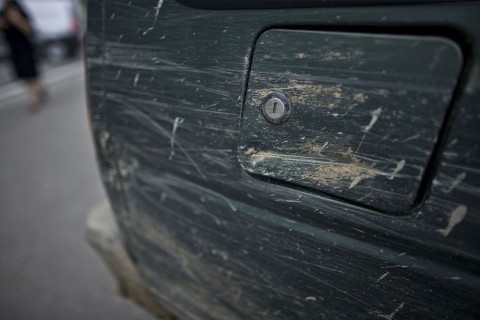
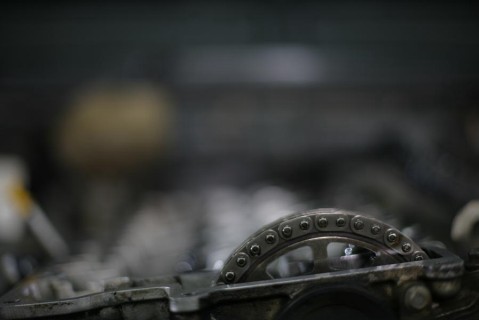
Very few hundreds of kilometers after we bought out Land Rover 110, we had our first major disaster. We saw ourselves driving it through the desert dunes, maybe even a modest expedition to Asia, but there we were, on the side of the road, with a dead engine and not allot of knowledge about what was under a Landy bonnet. Apparently the lubrication system for the engine clogged, completely obliterating the fifth piston and causing quite a bit of damage to the rest of the engine block. It was taken back to the city, brought to the Land Rover service and fixed replacing the cam shaft, the pistons and doing a good deal of maintenance on it.
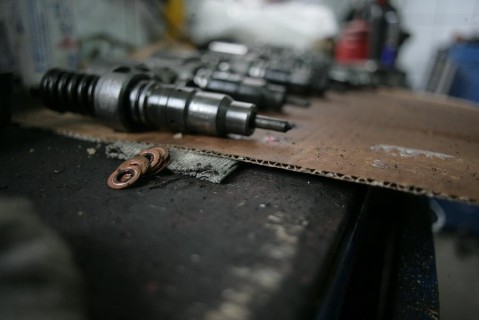
Some time later, at the end of 2008, we gathered the strength and found the time to organize a trip to Morocco. Finally, we would go to Africa, like weve discussed for such a long time. We prepared for this thoroughly, loading the 110 with absolutely everything anyone would ever need if they were to set off on this trip. We left the city and managed to drive a little more than 300 kilometers when the car suddenly stopped. Our luck was that it stopped just a few kilometers from a friends car repair shop, where our friends managed to take us.
The damaged Rover was taken to the repair area and together we started taking things off. We had a spare fuel pump, spare fuel filter, spare almost anything. Our luck was that a good friend managed to bring over another acquaintance who was, and still is, one of the most knowledgeable people as far as Land Rovers go. Together they took the car apart, front to rear and couldnt find what was wrong with it. Time was ticking and our African dream seemed more and more distant. The engine was taken apart and the injectors were ejected and cleaned. Then the problem became obvious. It was probably something that nobody ever thought about: the injector washers. They were impossible to find in such a short time thus the truck was unceremoniously brought back home, on a platform. The rest of the group left for Africa then, my parents taking a smaller Suzuki Grand Vitara which performed wonderfully Im still dreaming of driving myself there.
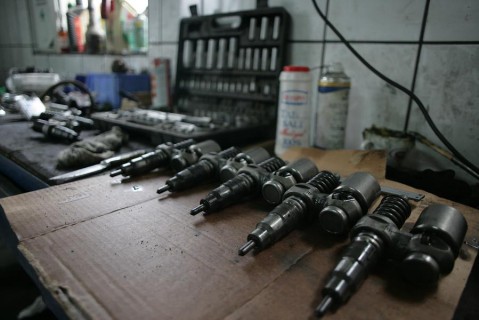
We took the final hit at the beginning of this month. Driving back from a race, our 110 SW just stopped in the middle of the road. This last crossing of the line was nothing more and nothing less than winning the lottery twice. A broken hose in the expansion tank spilled all the coolant that was supposed to keep the engine from overheating. In its turn, the block got hot, but the heat sensor couldnt tell because it required coolant to do so and since it was just suspended in mid air, it was reading a perfectly cool under-the-bonnet temperature. When the engine stopped, it stopped for good. The overheating damaged a number of important parts in the car fortunately, like any good Land Rover ex-owners, we had spare parts for absolutely everything so it came as no surprise when they said You need to buy new injectors. Our relief of having five spare ones in a box at the country side had nothing to match it to. Unfortunately, serious engine problems have no rapid solutions for fixing them. The only resolution is taking them to the repair shop and letting specialists handle them unless you know what you're doing.
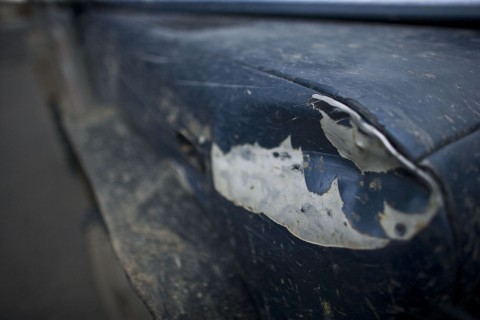
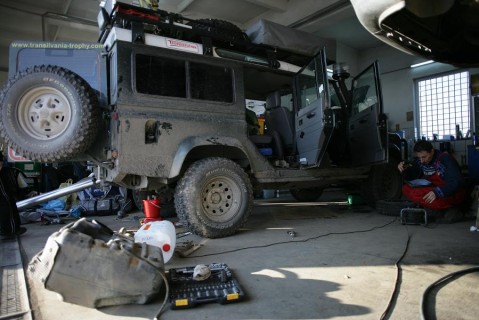
These have been the best of times and the worst of times. As I said in the beginning, cars have always broken and will, undoubtedly, always break. Its been a bit of a heart ache trying to write about all these times the cars we love have failed us but all I hope is that these lines will help you understand your machines better, treat them right and take these things into account the next tine they break down.